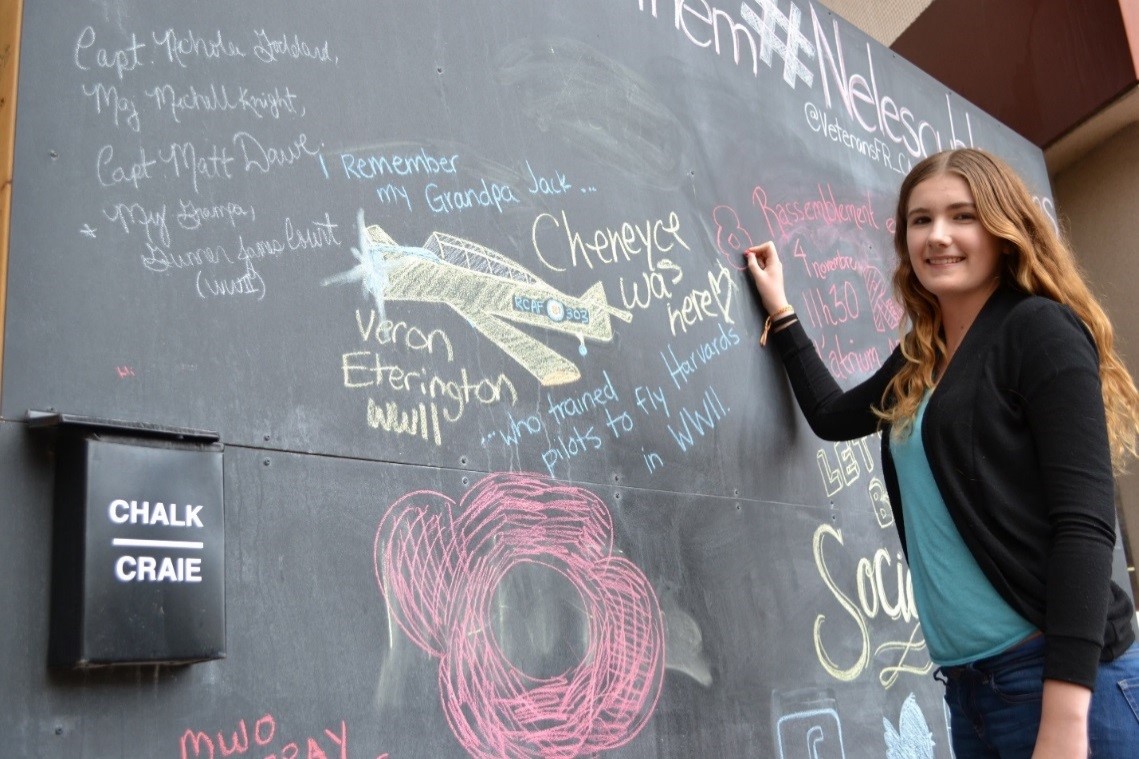Chalk it up to Remembrance
This publication is available upon request in alternate formats. PDF Version
More than one hundred years ago, during the First World War, the Canadian Corps was ordered to capture Vimy Ridge in northern France in April 1917. For them to succeed, they knew they had to very carefully plan and rehearse their attack to make sure the troops reached the enemy lines effectively.
The soldiers had weeks of serious training. They used mini models to represent the battlefield, and maps and photographs to guide their way. They dug trenches in which to hide before going “over the top” when the attack began.
To keep men safe and hide supplies before the attack, engineers dug deep tunnels 10 metres underground for the soldiers. The men were lowered down and waited there many hours. Tunnels were dark, cold and damp and they had chalk walls (chalk is a soft, white, porous, sedimentary carbonate rock).
To pass the time before the attack at Vimy Ridge and to leave traces of their time on earth (many thought they would not survive the battle), soldiers began to cover the chalk walls of their “hiding spot” with their thoughts, memories, hopes and fears in the form of graffiti. Graffiti went from basic engravings of scribbling their names to poetry, drawings and memories of life in Canada before the war.
As well as graffiti, men left detailed carvings in the soft chalk walls underground. Many of the soldiers were very artistic. They created incredible carvings of regimental badges, or symbols of Canadian identity and personal objects that linked the soldiers with their happy memories and far off homes. A fish, a canoe, a wheat field, a maple leaf… Thomas Mason and William Percy Beckett even carved a mailbox, where they would keep letters they wanted to mail home!
For some of them, their carvings would be their last written expressions as many died going over the top and during the fierce four days of battle.
Over a century later, beneath the trench-scarred battlefields of First World War France, many of these carvings still exist - such as a pig carved by Earl Lacey who had been a farmer in Ontario before the war. He didn’t survive the war, but more than 100 years later, the pig’s tail is still curly on the chalk wall. Photographs and 3D reproductions have been done of these carvings. They are now part of exhibits in both Canada and France that tell the stories of friendship, boredom, death and longing for home that soldiers experienced while in these underground tunnels.
Graffiti has been a popular and fundamental means of public expression throughout human history, from the cave paintings of Lascaux to modern tags. It is a simple and efficient means of communicating visual ideas. Maybe you have seen chalkboards in your community where people write their thoughts? Why not create a classroom chalkboard or smartboard wall of remembrance? Each of you could draw or write down your thoughts about Remembrance or the Battle of Vimy Ridge, take a picture of your chalkboard tribute and share it on social media using #CanadaRemembers. Please be mindful of where you put your Remembrance art, as drawing or writing on a property without consent is considered vandalism. This activity is a way to remember and thank Canadians who served in the Battle of Vimy Ridge. Their service and sacrifice now help us live in a free country. Let’s not abuse this freedom! Please make your graffiti in a suitable and respectful location.
- Date modified:



